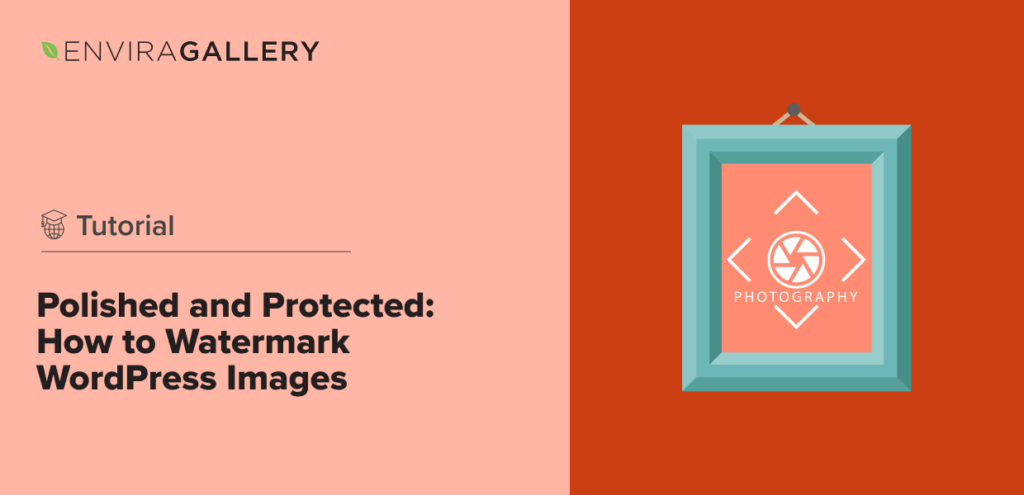Photographing a sporting event can be a daunting task, especially if you’re a beginner. There are so many moving pieces to manage that once you arrive at the venue, you might be stressed. So, what’s the best way to photograph a sporting event?
Sporting event photography is its own photography niche and requires a few key strengths. Here’s what we’re going to cover in this guide:
- Sports photography tips
- Getting started with sports photography
- The challenges of photographing sports
- Necessary equipment for photographing sporting events
If you want to be better equipped to handle the intensity and excitement of photographing sporting events, read on! Also, check out our other sports photography guides, including this one with photography tips on how to become a sports photographer.

Tips on Photographing Sporting Events
Like any other genre of photography, sports event photography requires you to have a strong understanding of your gear before you arrive to shoot. And, perhaps even more than some other niches, sports event photography necessitates having more specific types of gear.
Always double check your gear before you leave for your event. Cameras, memory cards, lenses, flashes, computers and cables — you’ll need all of it. You don’t want your content to suffer because of a hardware problem.
A lot of sports content needs to be immediate, meaning that last week’s game isn’t important anymore. Don’t miss your opportunity to capture the best photo of a buzzer-beater basket because you left a vital piece of equipment at home.
It is also important that you are comfortable with your equipment. At sporting events, you simply don’t have the time to figure out how to get a correct exposure. If you’re fiddling with your camera, you’ll miss something important. So, make sure you know how your gear operates.
You might also consider using online tutorials for shooting in specific types of venues, especially if you’re new to the genre. Different locations can dramatically affect the types of shots you can get and how you get them. Those online resources will help you figure out where and how you should photograph for the best results in the space.
What Is a Sports Event Photographer?
Sports event photographers cover a variety of events, probably more than you would expect. They photograph not just games, but press days, athlete portraits, press conferences and post and pre-game events.
A sports event photographer’s job is to capture the essence of a sporting event through photography — it’s content, of course, but also its mood and tone.
Because sports event professional photographers will shoot a multitude of different events, they need to be extremely versatile in their style and capabilities. For instance, you might be asked to take some headshots of a sports broadcaster before he retires, or you could land a job photographing the World Cup.

How Can You Become a Professional Sports Photographer?
Like many other careers in the arts and entertainment, landing a professional sports event photographer job requires a killer portfolio and a network of contacts. And, luckily, putting together a photography portfolio isn’t actually as intimidating as it sounds. In fact, we’ve already written a guide on the subject.
But, to boil portfolio-making down to its essentials, you need to start with a large base of images to choose from. Start by shooting any and all sports events you’re available to cover. From high school and college events, to professional arena events and everything in between. Then, once you’ve amassed a collection of images, you can select the strongest and exhibit those on your digital site.
Maybe you already freelance as a sports event photographer but want to start scoring higher end jobs. Again, use those smaller freelance jobs as opportunities to build your portfolio. Then, you can reach out to sports media agencies and athletics communications offices for event photo passes.
If you’re a beginner, those free events are of utmost importance. Show your skills in order to build a digital presence and name recognition for yourself, then start charging for photos. At a certain point, you should only be at events that pay you to be there. Getting to know journalists can jump-start your career since they often contract out photo assignments and frequently cover local and national sporting events.
How to Photograph Indoor Sports Without Sacrificing Photo Quality
If you are shooting at an indoor venue, there will be less light than you might be used to outside during the day. Fortunately, your camera knows several ways to moderate exposure so that you photos stay true to reality.
The first method is shutter speed. While it is ideal to shoot sports events at an incredibly high shutter speed, I sometimes find myself shooting lower than 1/1000th of a second to retain image quality.
You should also invest in larger aperture lenses. Large aperture lenses are expensive, but if you’re a sports photographer, you need them. Unlike other types of photography, sports photography is all about getting as much light on the sensor as fast as possible. This is why incredibly long primes exist, and why you see professional photographers using these behemoth lenses all the time.
This large aperture means more light reaches the camera sensor, and thus, a higher available shutter speed without an increase in noise. Remember, fast shutter speeds are important, because even the tiniest amount of blur could ruin your sports event image.
For an in depth look at shooting indoor sports, check out our guide to photographing sports in low light.

Getting Started With Sports Photography
As mentioned above, the first place to start is making a portfolio. If that seems like too hard a task, let’s break down what you need to do to tackle a sports event photography.
What Skills Do You Need to Be a Sports Photographer
Again, sports event photographers need to have a solid understanding of their camera settings. Read your camera’s manual, and play around with its settings until you understand how they work separately and in relation to one another.
This will help you develop a muscle memory with your camera, so that you can adjust your exposure settings without ever looking away from the game.
To be the best sports event photographer you can, you’ll also need to understand where to position yourself in various event situations. From where can you take your best shot? You may not know right now, but you’ll discover the answer as you shoot more and more events!

How Do You Learn to Take Good Sports Action Shots?
Good sports action shots freeze the motion within the frame. In order to achieve a frozen frame, you’ll need to shoot with a shutter speed of at least 1/2500th of a second. If you camera can handle some ISO variance, then try shooting even higher. Once you nail down your shutter speed, you can worry about maintaining focus.
Focusing for sports photography is hard, but you can make the task easier on yourself by using smaller focal points. Learning how to focus on moving targets is likely something you’ll just have to practice to really master. That being said, focusing on people’s faces and eyes can be helpful.
Eyes are crucial to sports photographs. Catching the eye of a player or person during an important moment often draws viewers into the image. Keep that tidbit in mind as you try to frame your best photos.
Also, remember that the sidelines of any event can be just as interesting as the game itself. If a player is injured and sitting on the bench, catch them invested in the game from the sidelines. Any special scenarios need photos.
Good Events for Entry-Level Sport Event Photographers
They key is to find high school and college games. Bigger, Division 1 college games will be much harder to get into, but there are ways to build yourself up. Below is a simple list of events that you can start with:
- Your former high school’s games: Most high school games, especially when you’re an alumni or have a child on the team, are extremely easy to gain access to. If you don’t have any relation to the team, try reaching out to the school to see if you can take photos for them. They’ll probably love the opportunity to have photos for the players, friends and family. But remember, always get permission!
- Smaller press events, signing days and other public events: Getting a press pass is usually necessary, but in a lot of these cases you can simply show up as an audience member, camera in-hand.
- Smaller, division 2-3 college and university games: Email athletic communications, and you can usually get a press pass.
- Sports league events: Sports leagues are often looking for photographers. I’ve even found several office or company leagues on classifieds websites looking to pay photographers to cover their events. These are really easy to get in to, and can often cover the cost of travel and help get you new gear.
The most important thing is to establish a relationship with those whose events you shoot. Be it a school’s athletic program, a venue’s managers, or someone that is well connected, if they can get you on the floor with a camera, you can build a body of work.
Once you build a body of work, put together a portfolio and market yourself. Soon, the best gigs will be knocking down your door!

Challenges of Photographing Sports Events
Sports events are difficult to photograph due to the variety of photographs you will have to take in a short amount of time. Another difficulty of sporting events can be the lighting situation, the access to the action and the fast turn around required.
The best way to master sports event photography is to practice and build your way up to bigger and longer events. This means that you should do as many smaller jobs in the field, which will help you develop a strategy for tackling bigger events.
If you experience difficulty shooting an event with poor lighting, make sure that you set up a good exposure in a manual camera mode. Shoot images in a lossless file format so that you can recover more of the image to work with in post-processing.
Above all, keep a close eye on your focus. This could be focus on the active athletes, on the crowd or on the rest of the team. If you can’t see something happening on the court or field, but you know the game has reached a climax, learn to capture reactions of those around you.
Also, make sure you know who is important, and who might become a story. Any good photojournalist does their research to know why certain people are important. Sometimes even a snapshot of someone could become a very important image.

Equipment Needed to Photograph Sporting Events
Sports photography in general is known to require the more expensive camera equipment than other photography genres. Multiple camera bodies, fast memory cards, incredible lenses and more will help elevate your event images. But what do you need to get set up as a professional sports event photographer?
One of the most important things to have at most sporting events is multiple cameras bodies. Being able to switch focal ranges from wide angle to super telephoto in seconds saves you from having to change lenses, which can be a time consuming process.
You’ll also want to consider the lenses themselves when purchasing for your starter sports event photography kit. High image quality and great autofocus speeds are both very important. Need some help choosing the right lens? We can help you out.
Of course, capturing great sports event images is only half the battle. The second half comes when it’s time to edit your shots. For that, you’ll want a computer that can quickly read through lots of files, and software to go along with it. Computers and software can be expensive, but they are both necessary investments.
If you’re as new to photo editing as you are to sports event photography, check out our top photo editing tutorials on the blog. They’ll help get you decide what software is best for you.
Last but not least, remember to purchase some high quality memory cards. Memory cards read data quickly will help your shoot process run more smoothly, and they’ll allow you to store large image files. They are also something photographers cheap out on, even though they’re essential to the process. Buy great memory cards, and make sure you are using them correctly.
The Cost of Sports Photography Equipment
At the high end, professional sports event photographers have two or three camera bodies, which may range in price from $3,500 to $6,000. They also carry extra batteries and grips if the camera doesn’t come with a larger body, plus memory cards and high quality readers.
For all this alone, your price tag may already have reached $20,000!
Then, we come to lenses. Basic lenses, a 24-70mm and a 70-200mm, are essential. Then you’ll want at least a single ultra telephoto prime lens. Something like a 400mm f2.8, which can easily cost $10,000.
This price breakdown likely isn’t in your budget — and that’s okay! This breakdown isn’t meant to be discouraging. Instead, know that the majority of sports event photographers don’t carry this kind of high-end equipment, and they’re still able to take killer photos. If they can do it without the fancy gear, then so can you.
Think about building up equipment over time, and even consider renting equipment for special events. A lot of sports photographers lease their equipment.
What Equipment Do You Need for Action Shots?
At the lowest end, an APS-C camera with a longer lens can do the trick. This way, you can dip your toes in the water without spending more than your budget can handle.
What is more important is that you learn the correct camera settings for sports and how to keep and track focus. Furthermore, this will help you familiarize yourself with a camera until you are confident enough to start using multiple devices at a game.
For sporting events out of game, an on-camera flash or speedlight is helpful. A lot of venues don’t have great lighting, especially off the court, so being able to light your subject helps a lot. Speedlight adapters for event photography, like a light sphere, can also help here.
Additional Equipment for Sports Photography
You might find that you want to acquire a monopod. Monopods allow you to pan with the action on the court and give you some relief from holding incredibly heavy lenses all game. I highly recommend them, especially if you aren’t ready for holding sustained weight at weird angles.
Another useful tool to sports event photographers would have to be battery grips. Holding a camera vertical without having an awkward elbow in the air is super useful. Additionally, the extra battery life is something many find necessary.
You might also invest in a photography vest. While I personally don’t use one, I know many sports photographers that swear by them. These vests let you carry around a lot more stuff, and are meant to hold things like batteries, lenses and even additional camera bodies.
Some vests have clips that allow you to clip on your camera bodies so you don’t have to be tangled with two or three straps.
We hope this guide to sports event photography has helped you on your photography journey! Let us know in the comments below why you love sports event photography and if these photography tips were helpful.
Follow us on Facebook and Twitter for more photography guides, tutorials and resources.
















That’s really nice post. I appreciate, Thanks for sharing.